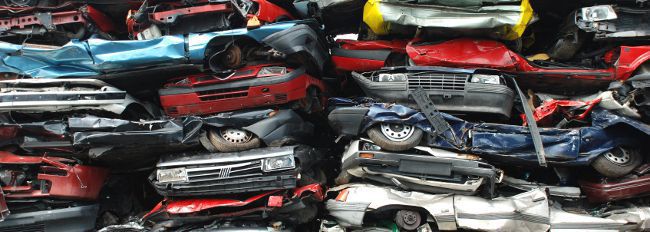
A total loss car claim arises when your car is deemed a total loss by your insurance company. This can happen for two reasons: either the car is so severely damaged that it cannot be repaired, or the cost of repairs exceeds the vehicle’s actual cash value (ACV).
The second scenario is more common. Insurance companies decide on a total loss car claim based purely on a business perspective, opting to pay you the car’s value rather than covering the higher cost of repairs.
A totaled car is one declared a total loss by an insurance company. This happens when repair costs exceed a set percentage of the car’s actual cash value (ACV), typically 70% to 80%, or if the car has irreparable damage. For instance, a car worth $10,000 with $8,000 in repair costs may be totaled depending on the insurer’s threshold.
Repairs Exceed Car’s Cost
Each insurance company has a different cut-off for the percentage of Actual Cash Value (ACV) for when they will declare your car a total loss. The cut-off percentage ranges between 70-80% of your car’s ACV depending on the insurer.
So for example, an insurance company with a 75% cut-off will declare your car a total loss if the repairs are estimated at $8,000 and your car is only worth $10,000. That is because $8,000 is more than 75% of your car’s $10,000 ACV.
The adjuster will tell you fairly quickly that they have declared your car a total loss and offer you a final value. Do not take their first offer as the final offer.
You need to investigate their reasoning and data before deciding whether to take their offer or whether to make a counter demand. Plus, it never hurts to ask for more money. All they can say is no.
As soon as the adjuster tells you they are totaling your car, he/she already has a ACV in their file. How else could they make the financial calculation to conclude the car is a total loss? Every state requires the insurance company to conduct a Fair Market Evaluation when handling a total loss car claim. Your goal is to dig into their numbers and calculations to find out whether their offer is fair and reasonable. Reach out to our Duluth car accident lawyer for assistance.
Analyzing the Adjuster’s Offer in a Total Loss Car Claim
If you are looking at a total loss car because the damages exceed the cut-off percentage, you should always demand the adjuster:
- State what their ACV percentage/guideline is for declaring a car a total loss.
- Provide you a copy of the repair estimate the adjuster is using to get his/her repair amount. The repair estimate will be from either the body shop where your car was towed or from an appraiser that the insurance company uses to estimate repairs.
Evaluating Comparables in a Total Loss Claim
Like you, the insurance company will use comparable cars to base your car’s ACV. Some insurance companies do their own research in house while others outsource it. The biggest provider is CCC Information Services.
You must request that the adjuster give you the reports/data that he or she is using. This data is the only way of figuring out whether they are making you a fair and reasonable offer.
Look over every one of their comparables with a magnifying glass. Some things you want to analyze are:
- Whether the comparables are in your same market (city, state, zip). If the adjuster is accepting a comparable outside your market then he/she should also accept one of your high comparables outside of your market as well. If you don’t have a high comparable outside of your market, go get one and insist the adjuster use it to come back with a higher offer.
- Carefully examine each comparable to see how similar they are to your car. Do they have the same options/features (stereo, sunroof, keyless entry, alarm, power windows, etc), similar mileage, etc?
Determining Your Car’s ACV Yourself
To increase the adjuster’s total car loss offer, you need to come up with an alternative, higher ACV. You do this by researching comparables for yourself. You need to find similar year, make, model and condition cars to come up with your car’s ACV. Use these resources to gather your data:
AutoTrader.com
Kelley Blue Book
Kelley Black Book
When using the above resources, you need to limit or filter your research to cars in your market (city, town, zip, or state). You can also look on Craigslist or in your paper’s classifieds for comparables.
When you find good comparable vehicles, print out or take screen shots of each site’s information. You may need to show the adjuster how you arrived at your number. Then take the average of all the data you have and use that as your demand amount for your vehicle. If you want to take a more aggressive approach, send the adjuster only the highest ACV car’s information and make that your demand, leaving yourself room to negotiate down to an average ACV later if need be.
Factors That Affect Your Total Loss Car Value
Make
Model
Year
Mileage
Special Equipment/Features
Prior accidents/damages
This works in the same way as diminished value.
Condition
Poor, average, clean, etc. This can have a substantial impact on your car’s ACV and you should make sure you agree with the adjuster’s classification.
Repairs & Improvements
Any repairs or improvements (sound system, rims, tint, custom electronics, etc.) you made to your car prior to the accident will not be paid 100 cents on the dollar. But, do not let the adjuster tell you they don’t pay at all for these things.
If the adjuster takes that position, ask them to send you something in writing showing you they can do this – like a paragraph from the insurance policy or something from your State’s Insurance Commissioner. Otherwise, you need to figure out a way to compute the current value of the improvement or repair. Let’s take tires for example.
Say you recently had tires put on the car to the tune of $400. The tires have a 50,000 mile tread life and you have driven your car a total of 10,000 miles since you put on the new tires. Well, this is 20% the life of the tires so you can argue the remaining value of the new tires is $400 x 80%, or $320. Other ideas are to Google deprecation schedules for the item, such as for stereos.
Negotiating Your Total Loss Car Claim
Total car loss adjusters normally only have about $500 room to move off their initial offer at most. This small range makes it hard to move the adjuster off his/her original number. Many adjusters will tell you their first offer is their final offer. Do not accept this tactic. There is always room for a second offer and it is always worth a try to put a couple hundred more dollars in your pocket.
TIP: If you are making your claim through your insurance company, threaten to invoke your independent appraisal clause found in your insurance policy. The insurance company is required to pay for the appraisal which a lot of time will cause them to bump their offer by the same amount as the appraisal would cost
Pushing Your Car To A Total Loss
Sometimes you want your car to be a total loss. This can be for a variety of reasons, such as safety concerns or the belief that the repairs are too extensive to make your car enjoyable to drive anymore. You need to tell the adjuster you want the car declared a total loss car in this situation in order to force the claim into a conversation about your concerns.
If the adjuster refuses to declare your car a total loss, you need to either:
- Increase the repair estimate to get above their ACV percentage threshold
- Decrease your car’s estimated value to get there.
Obviously you need to know what their percentage ACV cut-off is (see above) and what they are valuing your car at before you can do this. The insurance company must provide you this information. If a simple verbal request doesn’t do the trick then you need to send the adjuster a certified letter with your request that they disclose their “value basis” used to conclude the car is fixable.
Once you get their repair estimate, look for things like the following to increase the repair estimate:
- Make sure all exterior parts like fenders have a line item for painting
- Make sure the labor rate is appropriate and not low
- The estimate took into consideration hidden damages – did they get into the car’s internals for other damage like frame damage? Ask if the insurance company did a “tear down,” which is where they pull off parts layer by layer to find damage.
If you are unable to come up with the extra damage needed to push your car into a total loss, another option is to request the insurance company write a Letter of Guarantee. Make them guarantee in writing the repairs will be adequate and to your satisfaction.
They will tell you to get the letter from the repair shop. Don’t. Make the insurance company write it because they are the one making the decision to repair the car instead of totaling it out.
If you are unable to get your car totaled out and have to get it repaired, don’t forget to pursue a diminished value claim as well. Contact our car accident lawyer in Peachtree Corners today.
Car Loans
Most people have an outstanding car loan on their wrecked car. This raises a couple of issues:
- Making sure you get enough settlement money to pay off your car loan
- Whether the bank or loan company has any rights to participate in your total loss claim. This usually only occurs when you are making the claim against your insurance company.
If you are making a claim against the other driver’s insurance company, they can issue payment to a registered owner (you?) of your car. Because they don’t have a contract/policy with you there is usually no requirement they protect or interact with your bank.
If you owe more than your car is worth, and you are making your PD claim through your insurance company, the adjuster will usually contact your bank. The adjuster will ask for a guarantee from the bank that the bank promises to give it the car’s title in exchange for paying the ACV of the car.
You will end up owing the difference between the ACV and the loan amount so it is in your best interest to still negotiate a higher ACV with the adjuster. If the settlement is more then what you owe on the car, the insurer will send you a check for the difference.
Payment for Your Total Loss Car
The insurance company won’t send you a check for your totaled car until they receive the title transfer, allowing them to sell it for salvage. If you own the car outright, you will be the one sending them the title.
If you have a car loan, the financing company holds the title and will be the one sending it to the insurance company. If you’re dealing with a total loss car claim, this guide explains everything you need to know.
A car is considered totaled when the repair costs exceed its actual cash value (ACV) or if the damage is beyond repair. Insurance companies use state guidelines and their own thresholds, typically 70-80% of the car’s ACV, to make this decision.
The article walks you through negotiating with adjusters, reviewing their comparables, and calculating your car’s value to ensure you get a fair settlement.
It also offers tips for handling car loans and pushing for a total loss declaration when repairs seem impractical. Understanding the car totaled definition and your rights can help you secure the best possible outcome.
Need More Help? Get Our Property Damage Guide for Free!
If you want more information about what you should do after your car has been damaged in a car accident, you can download a FREE copy of David Brauns’ book – Tricks to the Fix: Your Ultimate Guide to Dealing with a Wrecked Car. You can also call our hotline at 404-418-8244 to speak with our car accident lawyer in Lawrenceville.
FAQs
Can you ask for more money when your car is totaled?
Yes, you can ask for more money when your car is totaled. Insurance adjusters often provide an initial offer based on their valuation of your car’s actual cash value (ACV), but this offer is negotiable. To request a higher amount, review their valuation carefully, check their comparables for accuracy, and gather your own evidence of the car’s value, such as listings for similar vehicles. Present your findings to the adjuster and make a counteroffer. Many insurers are willing to negotiate, so it’s worth advocating for a fair settlement.














